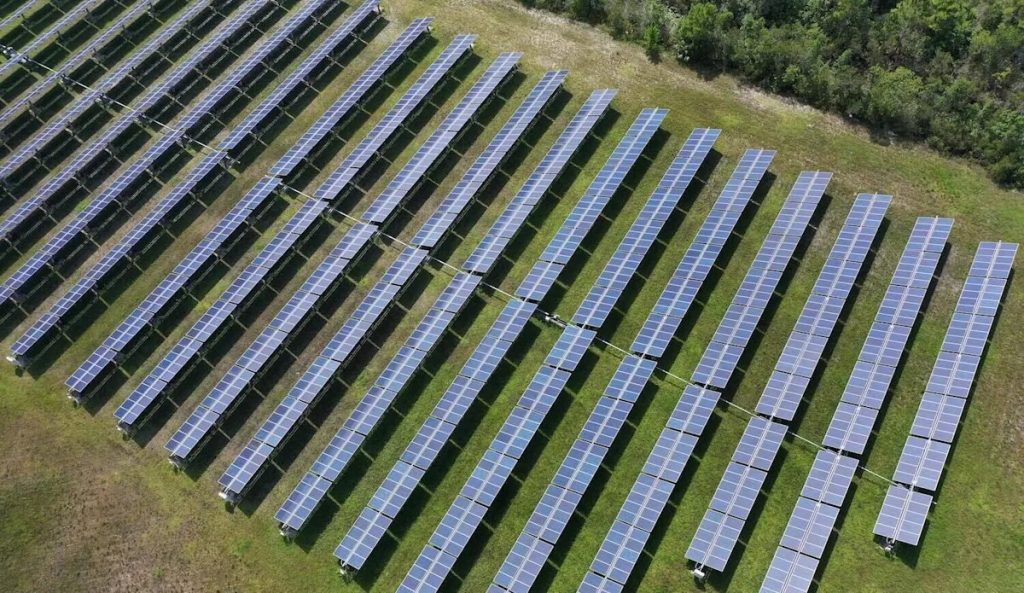Trump Administration Prioritizes Fossil Fuels, Hinders Renewable Energy Growth with Misleading Land-Use Arguments
The Trump administration has issued a new directive mandating that federal leasing decisions for renewable energy projects consider “capacity density,” a metric designed to disadvantage solar and wind power. This move, spearheaded by Interior Secretary Doug Burgum, is the latest in a series of attempts to stifle the growth of renewable energy and promote fossil fuels based on misleading land-use arguments propagated by groups linked to the fossil-fuel industry. The directive requires federal agencies to evaluate the amount of electricity generated per acre, favoring high-density sources like nuclear and gas plants while penalizing sprawling solar and wind farms. This approach disregards crucial lifecycle considerations, co-use potential, and the long-term land requirements of fossil fuel extraction. The order even questions the legality of using federal land for renewable energy projects, citing their perceived “encumbrance” on other land uses.
This directive is not an isolated incident but part of a broader pattern of actions taken by the Trump administration to hinder renewable energy development. From restricting funding for solar projects on farmland to echoing misleading talking points about land use, the administration has consistently sought to create roadblocks for clean energy. This strategy aligns with the interests of fossil fuel companies, which have funded organizations that actively disseminate misinformation about renewable energy’s land requirements. The administration’s actions elevate these unsubstantiated claims to the level of federal policy, obstructing progress toward a cleaner energy future.
The capacity density metric is a flawed measure that ignores critical aspects of energy production. It narrowly focuses on electricity generation, neglecting the extensive land use associated with fuel extraction, processing, transportation, and waste disposal for fossil fuels and nuclear power. A comprehensive analysis would consider the entire lifecycle impact of each energy source. Furthermore, the metric fails to account for the multiple uses of land for renewable energy projects, such as agricultural activities or grazing. Solar and wind farms can coexist with other land uses, maximizing land productivity and minimizing environmental impact.
The land-use arguments against renewable energy are misleading and often based on inaccurate comparisons. Opponents of renewable energy frequently cite the large land area required for solar and wind farms, contrasting it with the smaller footprints of fossil fuel and nuclear power plants. However, this comparison is incomplete. It ignores the vast tracts of land used for mining coal and uranium, drilling for oil and gas, and transporting these fuels. Furthermore, fossil fuel extraction requires continuous exploration and development of new land resources, while renewable energy projects can generate electricity on the same land for decades. Studies have shown that the cumulative land use for fossil fuels over time can equal or even exceed that of renewable energy.
The Trump administration’s actions are driven by an “ideological agenda” that prioritizes fossil fuels over clean energy, according to experts. The capacity density metric is a tool designed to make renewable energy appear less favorable, ignoring its long-term benefits and the true environmental costs of fossil fuels. This manipulation of data serves the interests of the fossil fuel industry, which stands to lose from the transition to a cleaner energy system. By amplifying misinformation about land use, the administration creates a false narrative that undermines public support for renewable energy and delays the necessary shift towards a sustainable future.
The campaign against renewable energy based on land use has been orchestrated by groups funded by the fossil-fuel industry. These groups have employed various tactics, including town hall meetings, policy briefs, and online campaigns, to spread misinformation and generate local opposition to renewable energy projects. Their efforts have often focused on exaggerating the land requirements of solar and wind farms, while downplaying the environmental impacts of fossil fuels. This coordinated campaign has successfully influenced public perception and contributed to policy decisions that favor fossil fuels over renewable energy. The Trump administration’s directive is a culmination of these efforts, codifying misinformation into federal policy and further hindering the growth of clean energy.
The Interior Department’s order also disregards the long-term land requirements of fossil fuels. Unlike renewable energy sources, fossil fuels are finite resources that require constant exploration and extraction. This means that new land areas must continually be identified and developed for fossil fuel production, leading to ongoing environmental disruption and habitat loss. In contrast, renewable energy projects can generate electricity on the same land for decades, providing a more sustainable and less intrusive long-term solution. By focusing solely on the immediate land requirements of renewable energy projects, the order ignores the cumulative and ongoing land use impacts of fossil fuels. This selective framing creates a distorted picture of the true environmental costs of different energy sources. The administration’s actions represent a setback for clean energy development and a missed opportunity to address the urgent need for a transition to a sustainable energy future.


